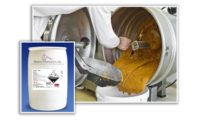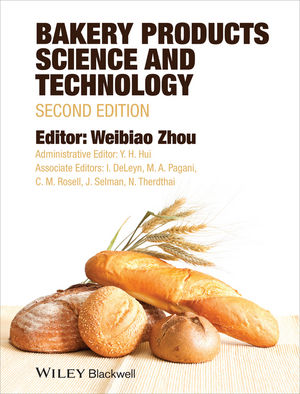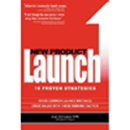Clean as a Whistle
By Dan Malovany
With so many varieties of baked goods hitting the bread aisle these days, pan cleaning and washing has become much more of a food safety issue than simply a sanitation concern.
“Traditionally, bakers have looked toward automating pan washing equipment to help them save water, labor and energy,” says Kevin Lemen, executive vice president of Douglas Machines Corp, Clearwater, Fla. “Today, they are also concerned about food safety and producing clean and sanitary results with standard operating procedures, time after time.”
Specifically, allergens have emerged as the single biggest concern. Some bakers even use two sets of pans for allergen and non-allergen products, notes Charles Gales, manager of automation sales for Weldon Solutions, York, Pa. As a result, an effective pan cleaning system could save on the number of pans a bakery stores, as well as eliminate the confusion that arises with multiple pan varieties.
“Variety bread and the numerous toppings that they require create potential debris problems in empty pans,” Gales says. “This is in addition to the typical crumbs that may remain in a pan after the loaf is depanned that may, if not removed, create a black spot on the bottom of the next loaf that could lead to a consumer complaint.”
Because of potential cross contamination, labeling could become an issue, especially if the ingredients in the residue aren’t listed on the package, adds Darren Jackson, vice president of business development for The Henry Group, Greenville, Texas. Such a situation could prompt a product recall.
“Obviously, cleaning and removing debris from the previous production cycles is advantageous even without an allergen concern from a product quality perspective rather than having particulates in the fresh dough,” he says. “Baked-on debris and build-up over time affects a pan’s ability to release at the depanner.”
Wet Versus Dry Cleaning
Product variety, Jackson adds, often determines whether a bakery uses pan washers or dry cleaners. Wet units, he says, are necessary when cakes, pastries and cupcakes contain icings, syrup or sugar. Breads and buns work well with dry units such as those offered by The Henry Group.
Some bakers don’t want to use water, if possible, and prefer to use the smallest dry blowers and motors to minimize energy and noise, says Austin Kozman, manager of research and development at Stewart Systems, Plano, Texas. Others demand brush bristles be made a food grade color that’s easy to spot in the dough. Ideally, they shouldn’t break. Bakers also prefer lower noise levels, better safety guards, gentle cleaning to protect pan coatings, a remote baghouse with drum for easy daily cleaning and a vacuum system that can remove whole buns missed by the depanner, Kozman says.
The good news is that overall pan cleaning technology has improved immensely over the last decade, Jackson says. Prior to that, most dry pan cleaners basically relied on compressed air that blew debris around and created a mess.
The Henry Group, he adds, incorporates its own air source so that its units do not require expensive compressed air. The critical issue is to develop systems that use proven technologies in the right configuration and to have the proper orientation of components.
“Basically, bakers are wanting an insurance policy on cross contamination,” Jackson says. “I believe we go beyond that by providing cleaner pans for improved product quality and debris-free pans that reduce [quality control] labor between pan cycles.”
Reduce Labor, Downtime
Not surprisingly, hand washing pans no longer is possible, especially with the labor shortage impacting the baking industry, Lemen notes. Moreover, bakers are concerned about reducing downtime, especially when changeovers are required.
So what differentiates one pan cleaning system from another? It depends on a bakery’s needs.
Weldon’s Pan Verter system cleans rotate pans 180-degrees to clean them upside down, Gales says. The system patent-pending devise turns pans over in the axial direction by means of a servo-controlled rotor and a series of magnetic conveyors. The versatile system can clean either bun or bread pans with the help of a rotating nylon brush, an air knife and gravity. Production rates are 40 pans per minute, or even faster if two pans are metered into the rotor at the same time.
After cleaning, Gales says, the system rotates pans to their original right side up position. Simple height and side adjustments allow Weldon’s Pan Verter system handle a variety of pan configurations.
The Henry Group’s pan cleaner is powerful enough to offer the additional benefit of loaf and bun extraction when missed by the depanner.
“This really didn’t start as a selling point, but it is appreciated by bakers,” Jackson says.
The system doesn’t guarantee product extraction, especially on a five- or six-strap pan.
“However, customers like the ulterior benefits,” he adds. “If our unit is powerful enough to extract a loaf, imagine what it does to a sesame seed.”
Stewart’s unit is sealed significantly tighter for better vacuum levels, Kozman explains. An improved vacuum duct design can accommodate whole loaves of bread or 6-in. buns without clogging. The system has smaller footprint, and individual inverters on the brushes can run on custom-designed speeds for quick removal.
The system also has a PLC touch screen that monitors operation conditions such as vacuum pressure, air knife blower pressure, safety interlocks. An alarm alerts operators if the system isn’t operating at its optimum level.
Most of Douglas pan washing systems feature programmable or pre-programmable digital controls, Lemen says.
“Larger bakeries are looking to integrate each piece of equipment in the entire production process and control it, or at least monitor it, from a central location,” he notes.
Douglas offers a comprehensive product line — everything from 12 batch-type pan washers with capacities ranging from six to 36 sheet pans per cycle to more than 40 continuous cleaning tunnel washers for nearly all containers in the bakery and food processing industry, Lemen adds.
The company also offers rack and pan washers, scale parts washers, smoke truck washers, vat, bin and trough washers, a belt washer and more. For instance, the Douglas Model COP-96-Combo Wash Tank is designed to safely and efficiently clean fittings, machine parts, valves and tubes in a re-circulating wash tank that provides continuous, turbulent, rolling, jet action. Versatility and cleaning effectiveness are provided by employing side jets, end jets or a combination of both by opening or closing valves in the supply manifolds.
“If a standard machine does not meet a client’s requirements, we will customize a solution with little or no added costs,” he says.
Editor’s Note: For more information about pan cleaning, check out Snack Food & Wholesale Bakery’s Buyer’s Guide at www.snackandbakery.com. Learn more about automation and technology by reading SF&WB’s Operations Weekly, also at www.snackandbakery.com.





